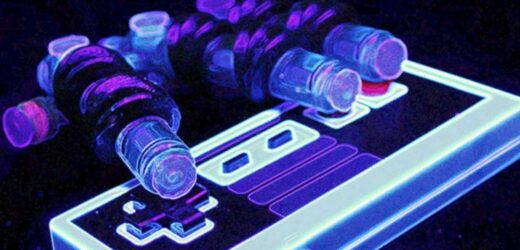Scientists have created a fully automated 'power glove' that can successfully play Nintendo's Super Mario Bros.
University of Maryland researchers, leading developers in soft robotics, have 3D-printed a robotic hand that can play the 1980s version of the game.
Soft robots are flexible as they are made from softer materials and can be powered sustainably with air or water.
The team, led by University of Maryland assistant professor of mechanical engineering Ryan D. Sochol, 3D-printed and fully assembled the parts with integrated fluidic circuits in one go using PolyJet 3D Printing to save time.
The integrated circuit let the hand operate in response to the strength of a single control pressure, according to a press release.
While playing the game, low pressure on the robot's first finger could make Mario walk and high pressure made him jump.
The team set up a program that switched between off, low, medium and high pressures, which resulted in the robot hand beating the first level of Super Mario Bros. in under 90 seconds.
'Nervous' Prince William and Charles 'concerned what Harry will reveal in new book'
In the report, the study's co-author Joshua Hubbard said: "Previously, each finger of a soft robotic hand would typically need its own control line, which can limit portability and usefulness.
"But by 3D printing the soft robotic hand with our integrated 'fluidic transistors,' it can play Nintendo based on just one pressure input."
The team have also said that they aren't keeping their soft robotic technology a secret as Sochol said: "We are freely sharing all of our design files so that anyone can readily download, modify on-demand, and 3D print—whether with their own printer or through a printing service like us—all of the soft robots and fluidic circuit elements from our work.
"It is our hope that this open-source 3D printing strategy will broaden accessibility, dissemination, reproducibility, and adoption of soft robots with integrated fluidic circuits and, in turn, accelerate advancement in the field.”
At present, the team is exploring the use of their technique for biomedical applications including rehabilitation devices, surgical tools, and customizable prosthetics.
Source: Read Full Article






